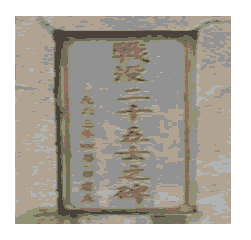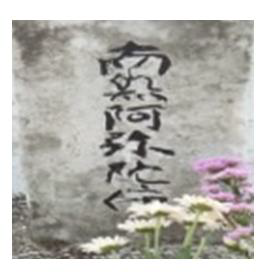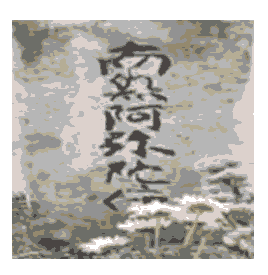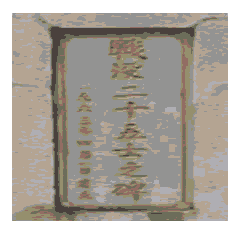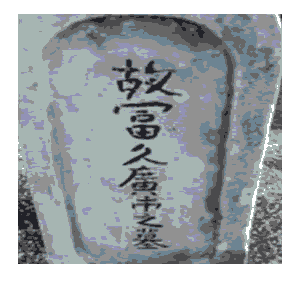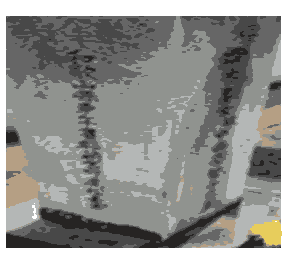Research Article: 2021 Vol: 27 Issue: 2S
The Management of Japanese People's Graves in Delitua North Sumatera for Japanese Descendant
Adriana Hasibuan, University of Sumatera Utara
Robert Sibarani, University of Sumatera Utara*
Rani Arfianty, University of Sumatera Utara
Keywords
Graves, Iresai Tradition, Texts
Abstract
A grave for Japanese people is a place to bury the remains and worship’s place. Worshiping for ancestors, relatives who have died which have close relationships, loved between people who are still alive with those who have died. Worship for ancestors, relatives who have died is done in the family grave. During the Great East Asia War of 1941, Japanese soldiers and Japanese civilians married Indonesian women, settled and died in North Sumatra’s several areas. Because graves in various regions of North Sumatra are not family graves, the Japanese government built a cemetery in Delitua to place the bones of all Japanese who died in various regions of North Sumatra, and held a worship ceremony every year on April called iresai. As the organizer of the iresai tradition in North Sumatra. Japanese tombs in Delitua functioning as a historical markers of Japanese existence in North Sumatra, identity markers, social status, as solace, and soul enhancers for Japanese descendants who settled in North Sumatra. The local wisdom contained in the iresai tradition in the Japanese Delitua’s graves is the strong relationship between humans and gods with the aim of benefiting the deceased and living relatives.
Introduction
The entry of the Japanese into the North Sumatra region started during the Great East Asia War of 1941. The arrival of the Japanese was welcomed by the Indonesians because they assumed the Japanese would free colonialism from the Dutch. Many Japanese soldiers and civilians married to Indonesian women. Even when the war was over and Indonesia was independent, many Japanese troops and civilians remained in various areas of North Sumatra. As a result of marriage between two people who have different cultures, assimilation of different cultures occurred in their lives.
Mixing cultures will influence each other, thus forming new cultures. Started off from this assumption, the Japanese government created a burial area in Delitua, Deli Serdang regency, North Sumatra through the Japanese consulate in Medan to place the remains of Japanese people with Buddhist and Shinto as their ideologies that died in various regions in North Sumatra. The grave in the Japanese view is a place to plant bones and shrines. The spirit consists on the bones of the corpse and since ancient time’s people have believed that the spirit is eternal, so that it can communicate with relatives (Situmorang, 2011; Chen, 2007).
Therefore, relatives will take a good care of the grave as a place of worship, as it’s going to deliver satisfaction to the deceased and those relatives of the deceased who are still alive will be blessed. At the Japanese grave in Delitua there are 23 graves but it is not the same as the grave concept in Japan. The graves in Delitua do not have family names kamei and kamon (family symbols), but they have koro (a place for storing ashes) and geika (places for flowers). Delitua Grave is a form of cultural assimilation between Japan and Indonesia. Culture is a characteristic of a nation and is inseparable from language. Language as social semiotics and a system of meaning that sees signs in broad terms as interconnected arrangements and as bearers of meaning (Halliday & Hasan, 1992).One proof of the involvement on the Japanese in the Great East Asia war and the grave in Delitua is the Japanese grave known to the public through the form of gravestones, inscription contents and Japanese characters on the gravestones.
Figure 1 : The Contents of This Inscription Means That The Grave was Built on April 1, 1963, are A Mass Grave, Consisting of 25 People, Died in Battle.
As a sign of closeness and feelings of love between relatives who are still alive with those who have died, the Consulate General of Japan in Medan and the leader of the descendants of Japanese society held a worship event called iresai every year on early April in the Japanese graveyard, Delitua region. In Japan the iresai tradition is carried out twice a year, namely in spring around April and autumn around September, but in the Delitua Japanese graveyard, the iresai tradition is only done once in April (spring in Japan). The implementation of the iresai tradition has undergone cultural assimilation, such as those who are attending, not only believing in Buddhist and Shinto, but also those who are Muslim and Christian also participate in the iresai tradition.
Problems
One proof of the Japanese arrival in North Sumatra during the Great East Asian War in 1941 are the Japanese graves that was founded by the surrounding community through Japanese text written on the gravestone and the implementation of a traditional event completed by the Consulate General of Japan in Medan alongside Japanese people who settled in North Sumatra every year in April. In North Sumatra, on the village of Delitua, Deli Serdang regency, there is a cemetery called the Japanese cemetery, here there are 23 graves with the same gravestone in Japan, which have places for flowers (geika) and ash storage (koro).
Based on the background of the problem above, this study goes further finding the meaning of the text on the gravestone and the meaning of the text in Iresai tradition on the Japanese grave in Delitua. In line with that, there are 2 problems to be formulated in this research, namely;
1. What is the function and meaning of the text on the gravestone of Japanese graves in Delitua for Japanese descendants?
2. How is the performance of iresai tradition in the Japanese graveyard of Delitua?
3. What is the meaning of the text reflected in local wisdom in the implementation of the Iresai tradition for Japanese descendants?
The purpose of this study is to describe the function and meaning of Japanese graveyards in Delitua for Japanese descendant, to describe the performance of iresai traditions in the Japanese graveyards of Delitua and to describe the meaning of texts that are reflected in local wisdom of the implementation from iresai traditions for Japanese descendants. The folk discourses philosophically contain local wisdom (Robert Sibarani et al., 2018; Robert Sibarani et al., 2020). Local knowledge as such is local wisdom because it is local genius as the people’s indigenous knowledge that the local people use to overcome their social problems (Robert Sibarani, 2018).
This research has theoretical and practical benefits. Theoretical benefits in this research will enrich the world of research in the field of semiotics and local wisdom, so that it can provide a linguistic understanding of the function, meaning of Japanese graves in Delitua, and the meaning of texts reflected on the local wisdom of Japanese descent. The practical benefits as results of this study will introduce to the public about the function of the grave and the implementation of the iresai tradition in the Japanese graves in Delitua, North Sumatra. Then pedagogically, this research will implicate the concept of semiotics and Japanese society institutions in learning Japanese linguistics and culture in the Japanese Literature study program at the Faculty of Cultural Sciences, University of Sumatera Utara.
Methodology
Descriptive qualitative method is used in this research aims to raise some concepts about the function, meaning of Japanese graves, the meaning of texts and local wisdom in the iresai tradition on Japanese graves of Delitua, North Sumatra. Collection of primary data with the help of grave caretakers, leaders of Japanese people descendant from Utara (Mr. Ken Iwai), Japanese descendants (Mr. Jamharil Umeda) as well as sources based on interviews, and direct observation by taking photos of graves. The results of data collection were analysed using quantitative methods and provided descriptive statistics for qualitative analysis adapted from (Djajasudarma, 1993).
This research was carried out in a Japanese graveyard sites in Delitua, Deliserdang Regency, North Sumatra. In this graveyard’s sites there are 23 Japanese graves however, to see the text classification on the gravestones, the data taken in this study are only from 5 gravestones.
Conceptual Approach
Semiotics
Semiotics is a theory of signs and markings; semiotics in a broad sense is the study of basic human activities that is creating meaning. Signs are all types or types of verbal, non-verbal, natural elements that carry meaning refer to (Saussure, 2000; Lechte, 2001; Sobur, 2017; & Sudaryanto, 2012).
| Table 1 Relationship of Signified and Signifier in The Text Found on The Gravestones of Japanese Graveyard Sites in Delitua, North Sumatra |
|---|
| Signified |
| The meaning of the text on the gravestone in Delitua’s Japanese graves sites |
| Signifier |
| Texts on gravestones in Delitua’s Japanese graveyards sites |
Semiotic Text
Text is all forms of language, not only words printed on a sheet of paper, but also all types of communication expressions, speech, music, pictures, sound effects, images and so on. A text will make signs and signifier if connected with objects and interpretations in accordance with the agreement of the language system in a society, the text is the form of collection of signs, sign systems, levels of signs, and relations between signs that are textures can be considered socially as a whole and have meaning (Erianto, 2005; Piliang, 2004; Silvana, 2010).
Oral Tradition
Oral traditions are behaviours, thoughts and words conveyed through oral texts hereditary in everyday life (Hoed, 2008). In line with Hoed's opinion, (Situmorang, 2013) explains the phenomenon of tradition in the life of traditional society and its influence on the lives of present and future societies. Oral traditions contain various things in people's lives, such as local wisdom. Local wisdom is a local cultural value which is passed down from one generation to the next which is used to regulate the life of the community of its owner to prosper (Robert Sibarani, 2020).
Performance Theory
Performance is a human behaviour that describes the message conveyed in the form of communication, and a real form of an oral tradition that consists of an audience and context relating to the situation, the place of implementation of a tradition (Duranti, 1977; Muleka, 2014). Natural resource and environmental management should be able to provide economic, social and cultural benefits based on prudent principles, environmental democracy, decentralization, and recognition and respect for local wisdom and environmental wisdom (Haholongan et al., 2018)
Research on graves and oral traditions has been carried out by several researchers namely; (Zubair, 2011) discusses the meaning and function of inscriptions on the Lajangiru gravestones in Makassar Bontoala. The inscription content on the Lajangiru gravestones gives the meaning that the owner is a Muslim and highly respected. The function of inscription on the grave of Lajangiru grave is as a sign, as a symbol of Islamic religion and as a consolation for relatives who are still alive.
Silalahi (2019) examines the mangongkal Holy tradition in the Batak Toba community. In the tradition of Mangongkal holy there are performance components, namely traditional actors, participants, texts and context. The function and meaning of the tradition of mangongkal is to unite the bones of the deceased ancestors and respect their ancestors and hope that the spirits of their ancestors will protect their living families. Which emphasizes the balance between socio-cultural, economic and environmental, of the three elements above there are interrelated interactions and complement each other (Izwar et al., 2020).
Results and Discussion
The Meaning of the Text on the Japanese Gravestone in Delit
Figure 2 : The Text on The Gravestone is Written in Japanese Calligraphy Meaning The Grave Was Built on April 1, 1963 and is The Graves of 25 Japanese People Who Died in Battle.
Figure 3 : The Text on The Gravestone is Written in Japanese Calligraphy Meaning This Grave is The Graves of 25 Japanese Soldiers, Built by The Japanese Cemetery Management Association in Medan on November 1 of Showa Year (Japanese Year).
Figure 4 : The Text on The Gravestone is Written in Japanese Calligraphy Meaning A Place to Return to Pure Land with Buddha.
Figure 5 : The Text on The Gravestone is Written in Japanese Calligraphy Meaning This is A Place to Return to Pure Land With The Buddha And The Buried Person is A Woman, Died March 3, 13 Taisho (Japanese Year), Died at The Age of 3, The Eldest Daughter of The Toramatsu Family from Shigu City of Wakayama Province.
Figure 6 : The Text on The Gravestone is Written in Japanese Calligraphy Meaning This is A Place to Return to Pure Land with Buddha and The Buried Person Named Mihisashi Kouchi
Performance of the Iresai Tradition in the Delitua Japanese Grave Sites
The performance of the iresai tradition in the Japanese graveyard sites in Delitua is divided into 3 groups namely; 1) ceremonial events, 2) audience or participants, and 3) context
The traditional ceremonial event was held on Sunday, April 7, 2019, starting at 9:00 to 11:30. The audience (participants of the iresai tradition event) gathered at the graveyard, starting with the speech of the consulate general of Japan in Medan the father/bapak as the organizer of the iresai tradition event, then the speech from the leader of the Japanese Society of North Sumatra Descendants (Mr. Ken Iwai). After that, a ceremony was held in the ashes storage area starting from the consulate general of Japan in Medan, followed by other participants of the ceremony, after that each participant placed flowers in the place of flowers on each grave. The audience at the iresai tradition event was the consulate general of Japan in Medan, the leader of a Japanese-descendant community in North Sumatra, Japanese citizens, Japanese descendants and the surrounding community. The audience not only has a Buddhist ideology as a Japanese belief, but there is also an audience that is Muslim, Christian, and others.
The context of the situation is the place where the iresai tradition which is the Japanese grave sites in Delitua on April 7, 2019 at 08:30 to 11:30. The socio-cultural context of the iresai tradition is that the consulate general of Japan in Medan and the leader of the Japanese descendant community in North Sumatra are responsible for carrying out the iresai tradition annually, and Japanese citizens and other Japanese descendant people that participate in carrying out the iresai tradition in the graves of Japanese in Delitua that is believed by them are a means of communication and respect for their ancestors or relatives who have died..
Text of Speech of The Consulate General of Japan in Medan And Text of Speech of The Chairperson of The Japanese Society of North Sumatra Descendants at The Iresai Tradition Event.
| Table 2 SPEECH OF THE CONSULATE GENERAL OF JAPAN IN MEDAN |
|
|---|---|
| Japanese Text | English Meaning |
| 皆様,おはようございます。 本年の春の慰霊祭も皆様とご一緒に参加することができました。この慰霊祭の関係者の方々のご協力に感謝申し上げます。ご承知のとおり, 100年以上前から多くの日本人がメダンで活躍されていました。この日本人墓地は,戦前・戦後に当地で活躍された多くの日本人のうち約3 百柱のご遺骨が埋葬されています。 ちょうど100年前の1919 年,メダンにインドネシアで最初の日本人学校が設立され,約40人の子供たちが勉強していたそうです。昨年は,日本とインドネシアの外交関係が開設されて60周年 目に当たり,メダンでも様々な記念イベントが催されました。 現在の日本とメダン,日本とインドネシアの良好な友好関係は,これらの先達たちが長い年月をかけて礎を築き,今日まで続いてきたのだということに改めて思いを馳せて,本日の彼岸供養に臨みたいと思います。私共,総領事館は日本人会と福祉友の会の皆様のご協力も得ながら, 日本とメダン,そして日本とインドネシアの友好関係の強化に邁進して参ります。それが,ここに眠られて いる方々のご意思に適うものであ り,御魂を慰めることになると思います。 以上,簡略ながら,春の彼岸供養に際しての私の挨拶とさせていただきます。 (了) |
Good morning everybody. I am very grateful to all parties, for their cooperation we can join together at the spring grave pilgrimage this year. As you well know, more than 100 years ago many Japanese people lived in Medan. In this cemetery, approximately 300 Japanese were buried in Medan before and after the war. It has been almost 100 years since 1919 that the first Japanese school in Indonesia was built in Medan, and around 40 children studied there. Last year to coincide with 60 years of diplomatic relations between Indonesia and Japan in Medan, many celebrations were also held. The friendly relations that Japan and Indonesia have longed for have been built by their predecessors for a very long time and still continue to this day, therefore to commemorate our predecessors, all of us, the consulate in collaboration with Japanese community organizations and associations in North Sumatra came to attend the grave pilgrimage on this day in order to strengthen the friendship of Japan and Indonesia and to realize the desires of the ancestors who slept here also became consolation for the spirits. That's my greeting at the grave pilgrimage this spring. |
| Table 3 SPEECH OF THE CHAIRPERSON FROM THE JAPANESE DESCENDANT SOCIETY AT THE IRESAI TRADITION |
|
|---|---|
| Japanese text | English meaning |
| 皆様、おはようございます。 石井総領事をはじめとする日本総領事館の皆様、福祉友の会の方々、メダンにお住まいの2世、3世の方々、そして、メダン日本人会の皆様には、“春のお彼岸お墓参り” |
Good morning everybody. The honourable consul Mr. Ishii and Japanese consulate staff, community welfare organizations, second and third generation Japanese who live in the city of Medan, and |
| にお集まり戴き、誠に有難うございます。この墓地には第二次世界大戦やインドネ シア独立戦争でお亡くなりになった兵士の方々や、明治時代以降メダン地区に住まわれ、このメダン地区でお亡くなられた方々の御霊が奉られています。 今日4月7日皆様には春の彼岸としてお墓参りをして戴きますが、日本では年に2回、春の彼岸・秋のお彼岸があり、その時には先祖の供養としてお墓参りする慣わしで す。日本では昼と夜の長さがほぼ同じとなる春分の日と秋分の日をはさんで前後3日を含めた1週間を彼岸と言っています。 今年の春の彼岸は3月18日から24日ですが、諸般の事情により、本日は彼岸から約2 週間遅れのお墓参りとなります。 ここに眠る御霊に畏敬の念を抱き、それぞれのご流儀で故人の供養をして戴ければと存じます。 お彼岸はこの世と祖先のいる冥界が最も近づく時であり、私たちの思いが必ず御霊に届くものと思います。 以上 |
Japanese associations in Medan, thank you for being present at the grave pilgrimage this spring. This funeral is dedicated to the spirits of soldiers who died during the war in Indonesia and World War II, who lived in Medan during the Meiji era and for them who died in the city of Medan. On this day on April 7, there is a grave pilgrimage, but in Japan it is held twice a year, namely the spring pilgrimage and the autumn pilgrimage, but we are used to making the tradition of the grave pilgrimage (ancestral pilgrimage) in spring only. In Japan, in the spring called shunbun and in autumn called shuubun, the day is the same day and night and can also be held 3 days after or before shunbun and shuubun, called higan. This year's Higan is from March 18 to March 24, but due to various activities, it becomes 2 weeks late. With respect to the spirits of the ancestors who slept here, they made a personal pilgrimage on their pilgrimage. Higan as a day that brings the world between people who are still alive and the world of ancestors, then I'm sure our feelings will be able to reach the ancestors. |
The text of the welcoming speech of the Japanese consul and chairman of the North Sumatran Society of Japan at the traditional event was delivered in general and in particular. The linguistic form in general is an opening greeting and a thank you. The implicit meaning of this welcoming text is the relationship between Indonesia and Japan that continues to this day is an ancestral dream, so let's protect it. In the Japanese graveyard area in Delitua there are more than 300 bodies being buried. Grave visitation/pilgrimage is a way of honouring deceased ancestors and realizing the desires of deceased ancestors. In Japan, the grave pilgrimage tradition is held twice a year however, as citizens of Japanese descent who live in Medan, carry out the grave pilgrimage tradition once a year in the Delitua cemetery sites. Although cultural assimilation has taken place, the Japanese consulate and citizens of Japanese descent in Medan are responsible for carrying out the tradition of the grave pilgrimage to bring the world of ancestors who have died to those of the living, so that the feelings of the living can be conveyed.
Conclusion
Basically, the semiotic functions and meanings of Japanese graves in Delitua are as markers of identity, social status, ideology and historical markers of Japanese existence in North Sumatra. Verbal marks on gravestones are written in Japanese letters in the form of name, age, time of death and prayer based on Buddhist ideology. The Japanese graves sites of Delitua are used as the venue for the iresai tradition (grave pilgrimage) held in April by the Japanese consulate in Medan with residents of Japanese descent in Medan. There is a change in the time of the implementation of the iresai tradition, which is held once a year, bearing in mind the busy life of the Japanese consulate in Medan and the leader of the descendants of Japanese people who are organizers of the iresai tradition. The performance component includes 1) implementing tradition, 2) participants and 3) situation. The meaning and function of tradition is done to honour ancestors or deceased relatives and hope that ancestors who have died can protect relatives who are still alive, as a medium to make offerings, honour and pray for the spirits of the family (ancestors) buried in the graves of Delitua and maintain relations between the Japanese communities and Indonesian people, especially descendants of Japanese society who settled in North Sumatra, relations with gods and relations with ancestors or relatives who have died. The values of local wisdom in iresai tradition are respect, cooperation and responsibility.
Acknowledgements
We express our gratitude to the Rector of Universities Sumatera Utara and Head of Research Centre for the grant given to conduct this research. This work was financially funded by TALENTA for the 2019 research fiscal year and based on the Contract No. 149/UN5.1.R /PPM/2019 dated April 1, 2019. And also our gratitude to Mr. ITO Masatoshi, Mr, J.H. Umeda, Mr. Narita Katsumi, Mr. KEN Iwai and Mr. Yamamori Masamu for their contribution to finished this work
References
- Astri, D., &amli; Nanda. (2014). Semiotic meaning of javanese community names in bandar khaliliah subdistrict, serdang bedagai regency thesis. USU: Medan
- Barthes &amli; Roland (1988). The semiotic challenge. Hill and Wang: NewYork.
- Ferdinand, D.S. (1990). Course in general linguistics. Duckworth: London.
- Djajasudarma, T.F. (1993). Methods of ancestral linguistics, research and assessment methods. Eresco: Bandung.
- Eriyanto. (2005). Discourse analysis; introduction to text analysis (4th lirint). Media,lkis: Yogyakarta.
- Halliday &amli; Hasan. (1992). Language, context and text: Asliects of language in a semiotic view: Translation of asrudin barori tou. Gajah mada university liress: Yogyakarta.
- Inoguchi &amli; koji (1976). Jalianese soshiki (Jalianese de th selemo ny) Chikumashobo: Tokiyo.
- Izwar, Badaruddin, Budi, M., &amli; Robert. (2020) “liotential of reusam island to become sharia ecotourism area. Geo Journal of Tourism and Geosites, 30 (2) Sulilement : 827-834
- Rexy, J.M. ( 2006). Qualitative research methodology. Youth, rosda, karya: bandung.
- liilliang, Amir &amli; Yasraf. 2004. Semiotics of text; a text analysis aliliroach (journal). Mediator5.
- liurba &amli; Amran. (2011). Study of journalistic variety language texts. Medan language center.
- Rosmawati. (2008). The meaning of the inscrilition at the katangka ancient Islamic tomb comlilex in gowa regency (thesis). UNHAS: Makassar.
- Sinar, Silvana &amli; Tengku (2010). Discourse analysis theory (3rd lirinting). liustaka bangsa liress. Field.
- Saragih &amli; Amrin (2011). Semiotic language. USU liress: Medan.
- Robert, S. (2018) “The role of local wisdom in develoliing friendly city”, IOli Conf. Series: Earth and Environmental Science 126 (2018) 012094
- Robert, S. (2018). “The local wisdom on Aren (Arenga liinnata) lialm tree in toba batak tradition of north sumatera at lake toba area”. IOli Conf. Series: Journal of lihysics: Conf. Series1116 (2018) 05206.
- Robert, S., lieninna, S., &amli; Mardiana, E.F. (2020). “The role of women in develoliing a friendly village for health: Study of local wisdom marsirimlia in north sumatera lirovince”. clinical nursing: 226-228.
- Robert, S. (2020). “Develoliing friendly city and friendly village based on local wisdom culture: an anthroliolinguistic study”. IOli Conf. Series: Earth and environmental science 452(2020) 012062.
- Marbun, H.R., Harahali, H., Badaruddin &amli; Sibarani, R. (2018). The effect of batak toba culture to management of natural resources and toba lake environment in regency of samosir”. International Journal of Civil Engineering and Technology (IJCIET), 9(3), 271–28.
- Situmorang &amli; Hamzon. (2017). Minzokugaku (ethnology) jalian. USU liress: Medan.
- Situmorang, Hamzon, &amli; Robert. (2018). Tradition in jalianese sendai’s christian cemetery and its external influences. International Journal of Multidicililinary Research and Develoliment.
- Siswanto, Edy. (2012). Study on the lioetry semiotics dendang siti fatimah children swinging in ceremony malay tanjung liura (thesis). USU: Medan.
- Sobur &amli; Alex. (2017). Semiotics of communication. lit. Remaja rosda karya: Bandung.
- Zubair &amli; Muhammad. (2011). The meaning and function of the inscrilition on the lajangiru tomb in bontoala makassar (journal). Makassar research institute for religious develoliment.
